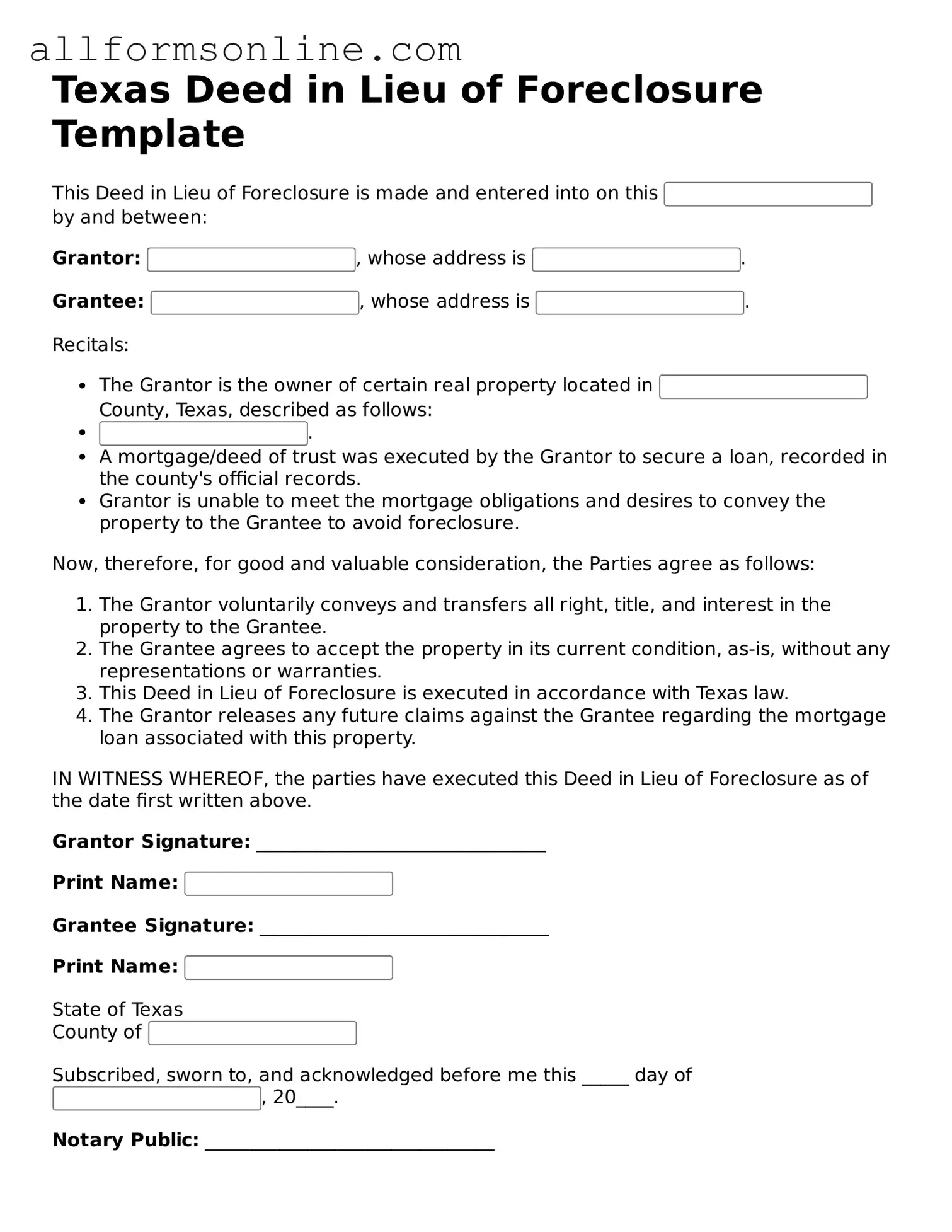What is a Deed in Lieu of Foreclosure?
A Deed in Lieu of Foreclosure is a legal agreement between a borrower and a lender. In this arrangement, the borrower voluntarily transfers the ownership of their property to the lender to avoid the lengthy and costly foreclosure process. Essentially, the borrower gives up their rights to the property in exchange for the lender canceling the mortgage debt. This can be a beneficial option for homeowners facing financial difficulties.
How does a Deed in Lieu of Foreclosure work in Texas?
In Texas, the process begins when the homeowner and lender agree to the Deed in Lieu of Foreclosure. The homeowner must provide the lender with a written request, along with any necessary documentation. After reviewing the request, the lender may accept the deed, allowing the borrower to transfer ownership. Once the deed is signed and recorded, the lender takes possession of the property, and the mortgage debt is typically forgiven.
What are the benefits of a Deed in Lieu of Foreclosure?
There are several advantages to choosing a Deed in Lieu of Foreclosure. First, it can save time and money compared to a traditional foreclosure. The process is usually quicker and less expensive for both parties. Second, it allows the homeowner to avoid the negative impact of a foreclosure on their credit report. Lastly, the borrower may be able to negotiate terms with the lender, such as the forgiveness of some debt or assistance in finding new housing.
Are there any drawbacks to a Deed in Lieu of Foreclosure?
While there are benefits, there are also potential downsides. For instance, not all lenders accept a Deed in Lieu of Foreclosure, so homeowners may need to negotiate. Additionally, the homeowner may still face tax implications, as forgiven debt can sometimes be considered taxable income. Furthermore, the process may not be suitable for those who have significant equity in their home, as the lender may prefer to pursue foreclosure to recover their investment.
Can I change my mind after signing a Deed in Lieu of Foreclosure?
Once the Deed in Lieu of Foreclosure is signed and recorded, it is generally considered final. This means that the homeowner cannot change their mind without the lender's agreement. It is crucial to fully understand the implications and consequences before entering into this agreement. Consulting with a legal professional can provide clarity and help homeowners make informed decisions.
What documentation is needed for a Deed in Lieu of Foreclosure?
The required documentation may vary by lender, but typically, homeowners will need to provide proof of income, a hardship letter explaining their situation, and financial statements. Additionally, the lender may request a copy of the mortgage agreement and any other relevant documents. Preparing these materials in advance can help streamline the process and increase the likelihood of approval.
How can I find out if a Deed in Lieu of Foreclosure is right for me?
Determining if a Deed in Lieu of Foreclosure is the right choice involves evaluating your financial situation and discussing options with a knowledgeable professional. A housing counselor or attorney can help assess your circumstances and provide guidance on the best course of action. It’s important to consider all alternatives, including loan modifications or short sales, to make an informed decision that aligns with your needs.
